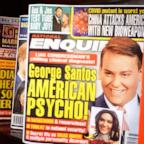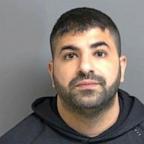Rare case of mumps taking toll
— --
More than two months have elapsed since the first case of mumps was reported, yet the unpredictable outbreak rages on throughout the National Hockey League.
And despite heightened sensitivity about the issue and increased vigilance from teams to try to prevent transmission, it seems there is another case almost every day.
It's a strange thing, especially considering the relative rarity of incidents in the United States. Each year in the U.S., the Center for Disease for Control and Prevention in Atlanta receives anywhere from a few hundred to a couple of thousand of reported cases. There were 438 confirmed cases in the U.S. in 2013, and more than 1,000 thus far in 2014, out of a total population of almost 320 million.
And although the vaccine-preventable disease -- which has symptoms such as swelling, muscle aches, fatigue, loss of appetite and fever -- has spread across college campuses (there have been four outbreaks this year at American universities), never has it run through a professional sports league. Once you've had the virus, you are immune to further outbreaks and are no longer contagious.
Most recently, the New York Rangers announced Thursday afternoon that forward Lee Stempniak will be isolated from the team for the next five days and will be tested for the mumps. It was the third such announcement of the day for the Rangers, as they were the first organization to reveal that the disease had reached the American Hockey League ranks as well. According to the Rangers, both forward Joey Crabb and head coach Ken Gernander of the team's minor league affiliate in Hartford, Connecticut, will be isolated and tested. Emerson Etem of the Anaheim Duckswas diagnosed last month while with the team's AHL affliliate Norfolk Admirals.
Currently, 16 NHL players -- out of a total of more than 700 -- have been confirmed as having had the mumps, with Penguins defensemen Olli Maatta being the latest named case, with the Rangers still waiting diagnoses for the aforementioned trio.
And the disease has not been limited to players. Two referees and one team's radio intern have also been diagnosed.
The NHL has few solutions beyond making its medical personnel available and providing support when needed. After issuing a memo to all 30 teams and their respective medical and training staffs in November, the league sent out an additional, more specific memo on Tuesday that detailed the proper protocol and designating appropriate personnel to handle a situation if it arises.
More than anything, the memo was disseminated as an effort to raise consciousness about the virus.
"We drilled down to specific expectations in terms of putting someone in charge at the club level to make sure things are getting handled appropriately," NHL deputy commissioner Bill Daly told ESPN.com on Wednesday. "The basis of information hasn't changed. Everyone knows what the disease is, how it is transmitted and the steps that need to be taken to minimize outbreak."
Although Daly said the league is not fearful of players contracting more serious illnesses from the mumps virus, the puzzling phenomenon has cast a pall of confusion as the NHL tried to curtail the problem.
The Penguins, who also recently tested goaltender Marc-Andre Fleury (his results came back negative), have endured scrutiny in the past week, especially after superstar Sidney Crosby appeared before the media on Dec. 12. After the team's morning skate, Crosby was sporting a large swelling on the right side of his face, considered a hallmark symptom of the disease. The Penguins decided to hold Crosby out for precautionary reasons and later revealed that further tests confirmed he had contracted the mumps.
Not long afterward, teammate Beau Bennett was diagnosed, prompting fear about his recent visit to a local children's hospital that might have caused unnecessary exposure for some patients. Dr. Michael Green, of the Children's Hospital of Pittsburgh's pediatrics infectious diseases division, said during a conference call with reporters on Wednesday that he did not believe Bennett was infectious at the time. Only two or three children who came into contact with Bennett had not yet received an age-appropriate dosage of the vaccine, Green said, but the hospital would continue to monitor accordingly.




